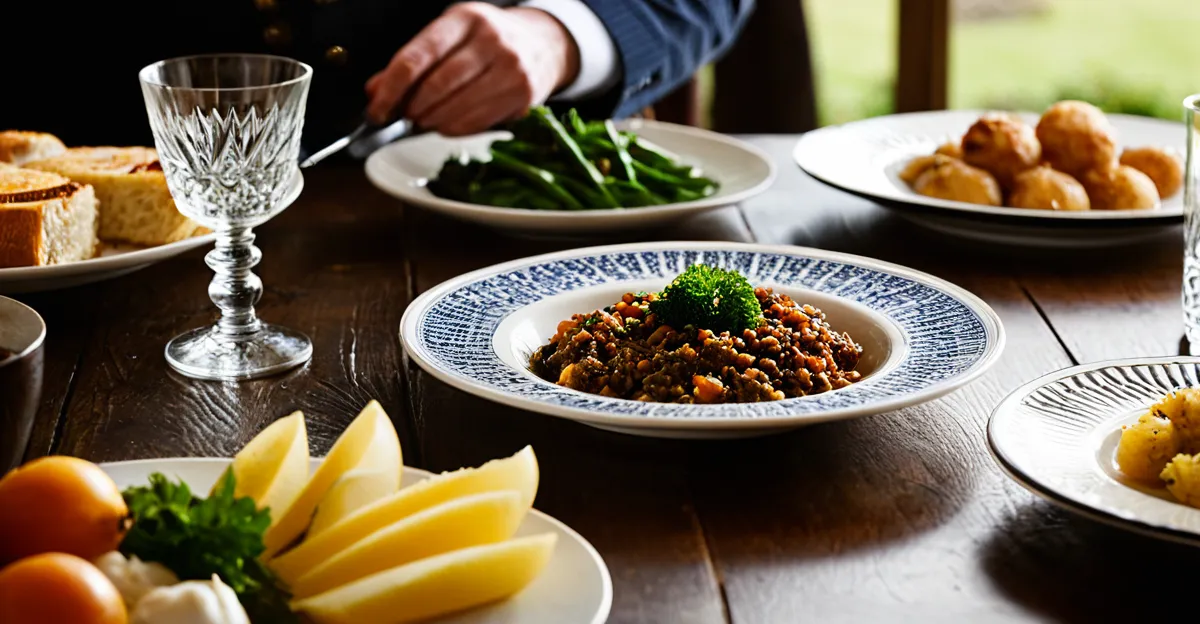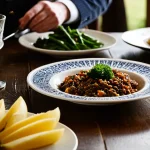Inspiration from Classic British Dishes
Classic British dishes provide a rich wellspring of British food inspiration for any dinner party. Rooted deeply in history, these recipes reflect the culture and traditions of the UK. Dishes like Beef Wellington, Lancashire hotpot, and Yorkshire pudding are iconic staples that showcase hearty flavours and comforting textures.
Exploring traditional British recipes helps understand the cultural roots behind these meals. Many classics are born from agrarian and coastal lifestyles, utilising seasonal, local ingredients. For instance, placing focus on root vegetables, lamb, and fresh fish reflects the British Isles’ culinary heritage. This understanding enriches both preparation and presentation of the dishes.
Topic to read : How Does British Cuisine Evolve with Global Influences?
To present these classics with a contemporary appeal, slight adjustments can be made without losing authenticity. For example, using fresh herbs or modern plating techniques can elevate the rustic nature of dishes. This balance of tradition and innovation makes British cuisine desirable and relevant for today’s dinner parties, blending familiarity with a fresh twist. Embracing this approach ensures the essence of British cuisine classics shines through while engaging guests in a memorable dining experience.
Modern Takes on British Flavours
Modern British cuisine reinvents traditional British recipes by blending classic elements with global influences and creative ingredient swaps. This approach breathes new life into familiar dishes, appealing to contemporary tastes while respecting the roots of British cooking. For example, a traditional shepherd’s pie might be updated using quinoa or spiced lamb, resulting in a fusion British dish that is both wholesome and innovative.
Topic to read : How can you make a hearty beef Wellington from scratch?
Fusion British dishes often incorporate international flavours without overshadowing the original essence of the food. Asian spices, Mediterranean herbs, or South American techniques can add dimension to classic recipes while maintaining their British identity. This form of culinary experimentation reflects the dynamic nature of British food culture today.
Trend-setting British chefs play a pivotal role in shaping contemporary British recipes. They blend heritage cooking with adventurous zest, showcased in vibrant menus that excite dinner party guests. Their work highlights how modern British cuisine continuously evolves, demonstrating versatility and creativity. For hosts looking to impress, adopting these inspired twists provides a fresh yet authentic British dinner experience that honours tradition with a modern appeal.
Designing a British-Themed Dinner Party Menu
Planning a British dinner party menu involves a thoughtful balance of time-honoured and inventive dishes. For a truly immersive experience, consider crafting course-by-course sample menus inspired by diverse British regions. For example, start with a Welsh rarebit appetizer, followed by a main course like Cornish pasty or Scottish venison stew. This not only showcases regional flavours but also offers guests a rich tour of British culinary heritage.
When selecting dishes, keep seasonality in mind. British ingredients vary greatly through the year, so highlighting fresh, local produce will elevate your menu’s authenticity. Root vegetables in winter or asparagus in spring reflect the rhythm of UK culinary staples, thus enriching the dining experience.
To balance tradition with innovation, pair hearty classics with lighter or modern elements. For instance, serve a traditional Yorkshire pudding alongside a contemporary salad featuring British herbs. This approach keeps your menu dynamic and appealing to various palates, providing British food inspiration for both hosts and guests alike.
Traditional Ingredients and Key Flavours
Authentic British cuisine classics depend heavily on well-chosen British ingredients that anchor their distinctive flavours. Essential pantry staples include root vegetables like carrots and parsnips, hardy potatoes, and seasonal greens, which form the basis of many traditional British recipes. These ingredients provide the rich, comforting textures that define UK culinary staples.
Herbs such as rosemary, thyme, and sage are pivotal, offering aromatic depth without overwhelming the dish. Distinctive condiments—like English mustard, malt vinegar, and horseradish—add layers of sharpness or warmth critical to authentic flavour profiles. Understanding these elements helps hosts select ingredients that enhance every dish’s authenticity and appeal.
When sourcing for your menu, prioritize local and seasonal produce to reflect genuine British food flavours. Specialty products such as Cumberland sausage or Cornish clotted cream elevate the experience by connecting guests to regional British traditions. This thoughtful ingredient selection brings British food inspiration full circle, enriching both the kitchen process and the final dining impression with true cultural resonance.








